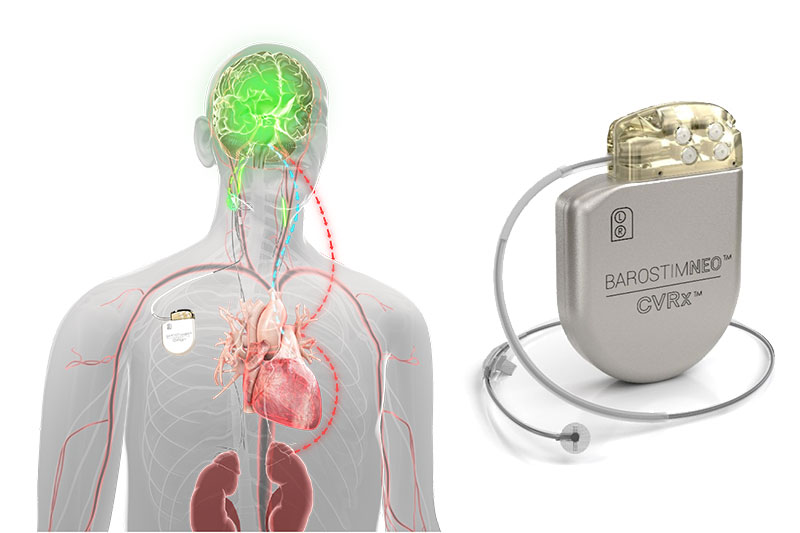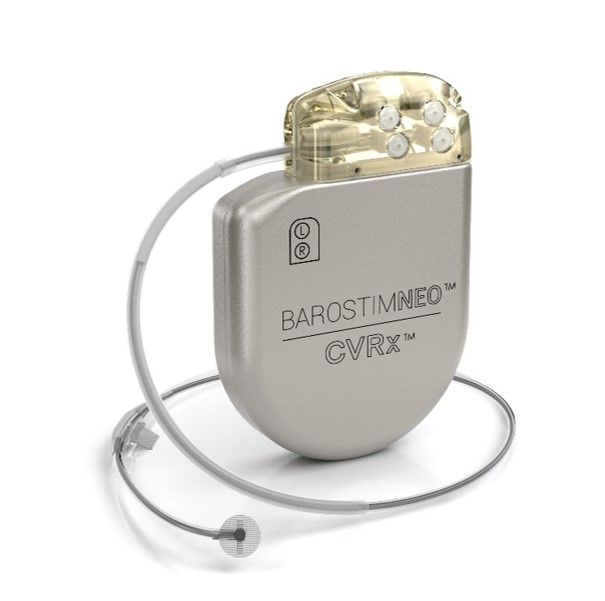BAROSTIM therapy for heart failure patients:
Indications:
- Ejection fraction is less than 35%
- Patient is on maximum medical therapy
- New York Heart Association functional class III, or class II with a recent decompensation that is documented
- Six minute walk test is less than 400 meters
- Increased BNP
Unlike vagal stimulation, this therapy targets the afferent as well as the efferent different neural pathways and it restores the balance of sympathetic and vagal systems. Thereby, a causes vasodilation in the peripheral vasculature, decreasing the afterload, improve forward cardiac output, and functionality. BAROSTIM therapy also reduces heart rate because of the vagal activity. In general, you can expect the six-minute walk test to increase, quality of life to improve, functional class improvement, and reduction in BNP. There are no mortality days at this time.
Preliminary data that suggests there is a small improvement in the left ventricle ejection fraction and reduced hospitalization. Keep in mind that the ejection fraction may not go up because this therapy does not increase contractility however the small increase is due to the unloading of the left ventricle. Most of these patients already have some sort of a device, and if the QRS interval is wide, a biventricular device can still be inserted in addition to the Barostim therapy. There is no restriction for atrial fibrillation or atrial flutter.
The procedure is performed in the operating room by a vascular surgeon at this time, Dr. Manuel Perez MD, at Advent health. He makes a small horizontal incision usually on the right side and places the device pads directly onto the carotid body, and then tunnels the wire down into the infraclavicular area where the device, which is the size of a dual-chamber permanent pacemaker, is placed into a pocket. The risk of infection is very low. The battery will usually last 5 years.


